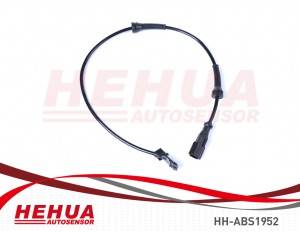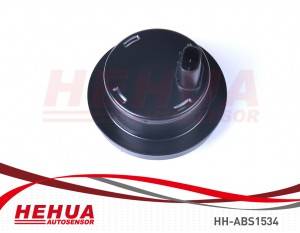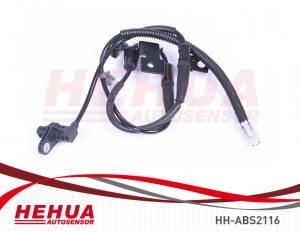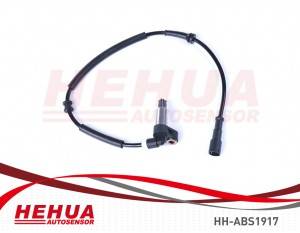ABS Sensor HH-ABS1218
HEHUA NO.: HH-ABS1218
OEM NO.:
34526756380
34520025726
34521165573
SW139
970122
0844140
009106321
6PU009106321
ALS452
5S10566
FITTING POSITIME: REAR AXLE LEFT
REAR AXLE RIGHT
APPLICATION:
BMW X5 4.4,3.0,4.6 (2000/05-/)
ABS Sensor
ABS sensors are classified in to two different types, Passive and Active. Passive is without a power supply and Active is with a power supply.
Passive sensors
These comprise of a wire coil wound around a magnetic core and a permanent magnet. The pole pin inside the coil is connected to the magnet and the magnetic field extends to the ABS ring. The rotational movement of the ABS ring and the associated alternation of teeth and gaps effects a change in the magnetic flux through the pulse wheel and the coil. The changing magnetic field induces an alternating voltage in the coil that can be measured. The frequencies and amplitudes of the alternating voltage are related to the wheel speed. The sensor creates a AC signal that changes frequency as the wheel changes speed. The ABS control unit converts the AC signal to a digital signal for interpretation.
Structure of a passive sensor
Output wave of a Passive sensor
Passive sensors are larger and less accurate than active sensors and only start to operate when the wheel reaches a certain speed, therefore they have limited operation at lower speed. They are also unable to operate in reverse, so thus unable to determine the direction of travel.
Active sensors on the other hand are a lot more accurate and are able to detect speeds of less them 0.06 mph, this is vital for modern traction control systems. Some active sensors can even detect the rotation direction of the wheels. Active sensors require an external power source to operate and work in conjunction with a toothed or magnetic ABS ring. Active sensors create a digital signal which is transmitted to the control unit in the form of a current signal using pulse width modulation.
Structure of an Active sensor
There are two types of active sensor. The Hall sensor and the Magneto-resistive sensor









